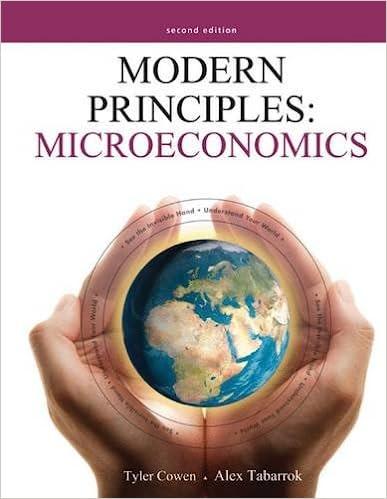1.7. Let's build on this chapter's example of asphalt. Suppose a new invention comes along that makes...
Question:
1.7. Let's build on this chapter's example of asphalt.
Suppose a new invention comes along that makes it easier and much less expensive to recycle clothing: Perhaps a new device about the size of a washing machine can bleach, reweave, and redye cotton fabric to closely imitate any cotton item you see in a fashion magazine. Head into the laundry room, drop in a batch of old clothes, scan in a couple of page from Vogue, and come back in an hour.
a. If you think of the "market for clothing"
as "the market for new clothing," does thi shift the demand or the supply curve, and in which direction?
b. If you think of the "market for clothing" a
"the market for clothing, whether it's new or used," does this shift the demand or the supply curve, and in which direction?
I.
c. What will this do to the price of new, unre cycled clothing?
d. After this invention, will society's scarce productive resources (machines, workers, retail space) flow toward the "new clothing"
sector or away from it?
(Note: This question might sound fanciful but three-dimensional printers, which can create plastic or plaster prototypes of small items such as toys, cups, etc., have fallen dramatically in price.
Every day, you're getting just a little bit do er to having your own personal Star Trek replicator.)
Step by Step Answer:

Modern Principles Microeconomics
ISBN: 9781429239998
2nd Edition
Authors: Tyler Cowen, Alex Tabarrok






